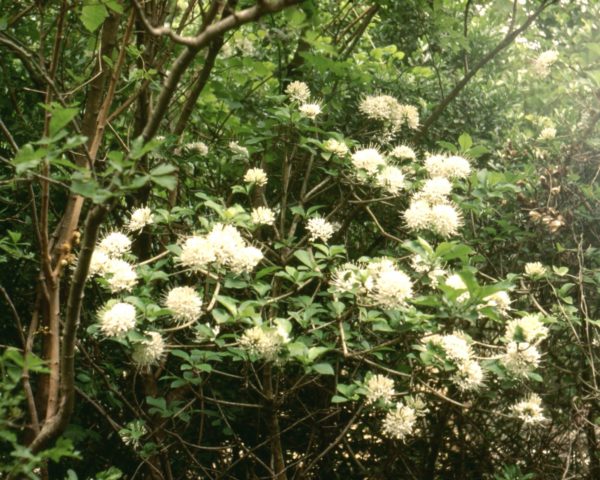A visit to the Silent Woman is always interesting, recounting the story of Willie Chalmers to newcomers. But today there was an added attraction. A small tree on the edge of the picnic site clearing was covered in bunches of white flowers. The display can be so profuse as to lead to the common name of bride’s bush. This is characteristic of the many species of Pavetta, this one being Pavetta cooperi. Apart from its beauty this little tree has a fascinating relationship with a bacterium. Hold a leaf up to the light and neat, black, evenly spaced dots can be seen. These are colonies of a bacterium unique to this tree, and found nowhere else in nature. Each of the many other species of Pavetta has its own bacterium. These are examples of symbiosis = living together. Both partners benefit. The bacterium has a secure home, and eats a small fraction of the tree’s sugar – produced by photosynthesis. The tree uses nitrogenous waste from the bacterium.

Two big questions arise. First, how does the next generation of trees acquire its own bacterial colonies? They cannot arrive from any external source, so must be transmitted via flower and seed. In fact every cell (not just the visible spots) in the parent tree has the bacterium.
Second, how did this amazing relationship start? Very long ago the ancestral bacterium invaded the tree with parasitic intent. Obviously the tree survived with minimal damage, and the parasite settled comfortably into its new home, eventually abandoning its original existence. Subsequently, isolated populations of Pavetta speciated, with their associated bacteria doing likewise.
